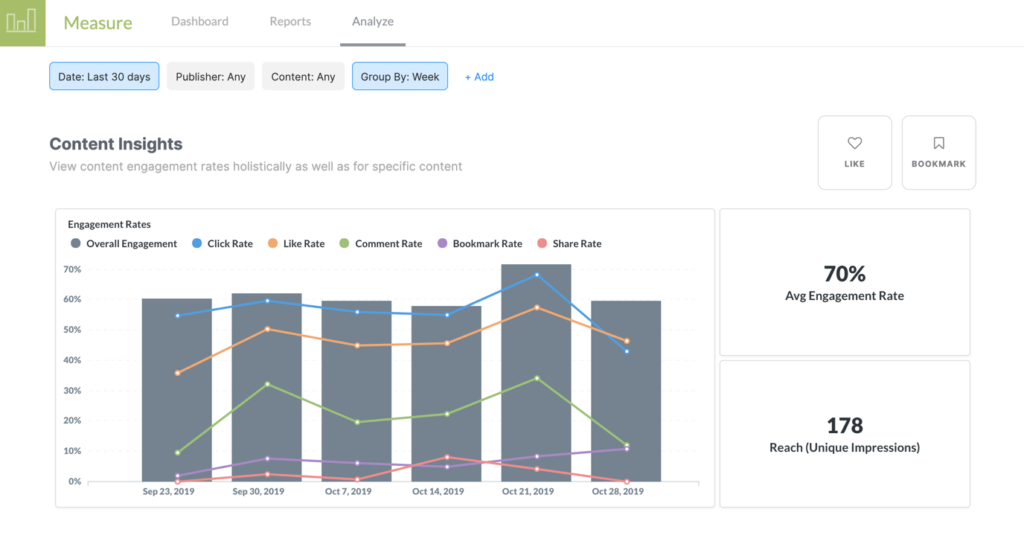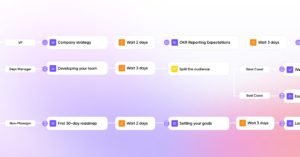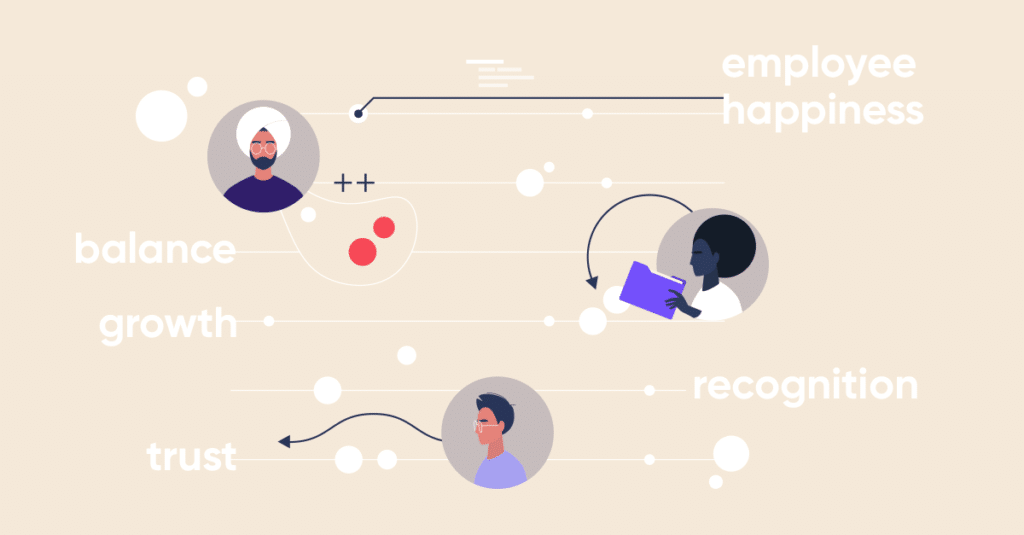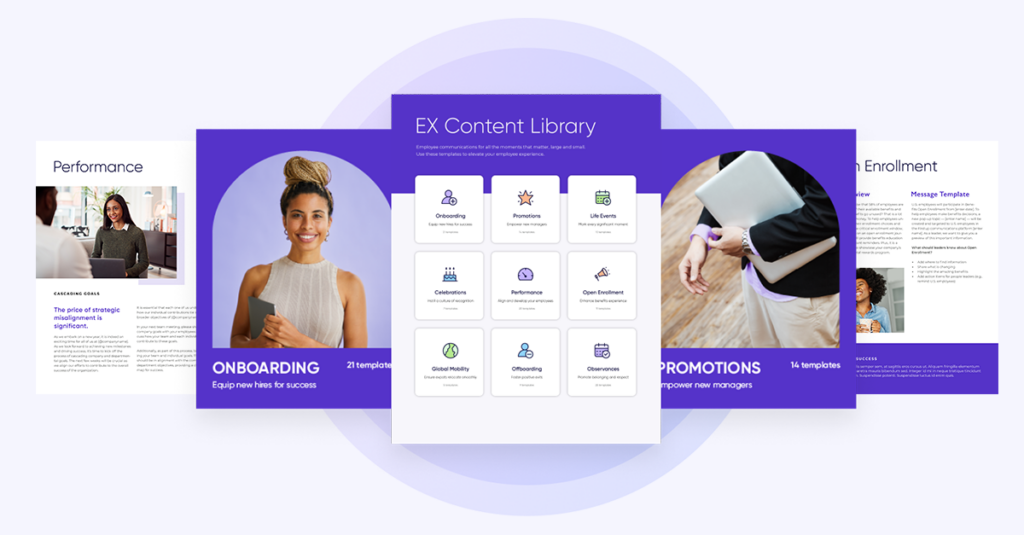“In a competitive labor market, creating an inspiring employee experience has become crucial for attracting and retaining top talent.” – Forbes Coaches Council, July 2024
While there are many different definitions, put simply, employee experience describes how employees view their work environment and tenure with the company. Increasingly, organizations rely on intelligent workforce orchestration—using personalized, data-driven insights to enhance this experience.
In his book, The Employee Experience Advantage: How to Win the War for Talent by Giving Employees the Workspaces They Want, the Tools They Need, and a Culture They Can Celebrate, Jacob Morgan says employee experience can be measured through three different lenses – Cultural, Physical, and Technological – and how an organization demonstrates its concern for an employee’s well-being within the context of their work.
Cultural: Am I being fairly compensated for my position as compared to peers in similar jobs? How do my benefits stack up? Does leadership support me and my work? How does the organizational structure affect future growth opportunities? Are there opportunities for flexible schedules?
Physical: Does my employer provide a safe and functional work environment? Is there enough space for everyone to do their job effectively? Does the setup (whether open offices, cubicles, private offices, etc.) foster productivity? Are there perks available like meals, counseling, or relaxation spaces? What’s the office location like?
Technological: Do I have the right tools I need to do my job? I.e., is my computer and phone new, or running on outdated platforms? Am I provided with new equipment when mine gets worn out or isn’t functional anymore?

Key drivers of a positive workplace experience include:
- Teamwork
- Purpose
- Fairness
- Recognition
- Meaningful work
- Empowerment and voice
- Feedback and growth
- Organizational trust
- Work-life balance
According to SHRM’s March 2025 research, recognition and team collaboration represent significant opportunities to enhance employee experience and drive retention, which are crucial amid current labor shortages.Research shows that organizations that prioritize employee experience report nearly three times the return on assets and double the return on sales compared to organizations that don’t. Meeting your employees’ expectations in all of these areas is important in order to create an environment where a positive employee experience is possible. But how do you know if what you’re doing is working and you aren’t just throwing good money after bad in your efforts? You start measuring.
How do you measure employee experience?
Now that we understand what it is, how do you measure employee experience? After all, every stakeholder will have different ideas of what “success” looks like. Employees want their experience to continually be improving, and management is looking for proof that their strategizing and investments are paying off. But by measuring how employees view your organization, how your offerings affect those views, what the outcome of those experiences and offerings are, you will be able to put together a quantified view of your efforts. So, how can you go about taking the pulse of your employees?
Employee surveys
If you ask the right questions, employee surveys can offer up a wealth of useful information. Rather than just asking about general feelings, vibes, and other overarching-type questions, employee surveys should be focused on descriptive, specific questions rather than judgemental ones. General feelings of malaise could skew any or all other questions asked, leaving you without a true measurement to move forward with. Surveys about engagement, onboarding process, training, pay and benefits, and exit surveys can provide a lot of information to help you make your employee experience better.
Separate by topic
That all being said, employee surveys should not be all-encompassing about all aspects of the employee experience. Let’s say that an employee is very unhappy with leadership (a score of 0, for this example) but very happy with the company culture (a score of 100), but the questions about each take place in the same survey. If you take that average, you get a 50; that makes for a pretty poor employee experience score! Separating out your categories when running surveys can provide you with meaningful feedback on which elements are successful and those that may need attention.
Human resources department
The data your HR department collects can provide vital information to measure employee experience. Be sure to keep track of recruiting, hiring, firing, absenteeism, compensation, promotions, etc. in order to get a clearer picture of what’s going on in your organization. (More on this later!)
Be open to feedback and criticism
If you are running employee surveys (and, you should be!), providing an empty space for them to fill in their own thoughts could provide you with insight that you didn’t even know you needed.
Know your benchmarks
If you are just starting to measure employee experience, you may not have benchmarks yet. But once you start a program, you will need to collect that data and use it for comparison in the future. Whether every quarter, every six months, or once a year, it’s important to set regular intervals for doing your measurements.
Investigate other companies
Take a look at how 252 organizations rank based on seventeen variables across the three elements mentioned earlier: culture, technology, and the physical workspace. These variables and environments are what employees care about most at work. The Employee Experience Index not only provides you with that info, but you can also take the assessment to see how your company would score.
Goals for measuring employee experience
So, why would your company want to take a look at all these metrics and start measuring employee experience? To ensure a healthy, happy, and productive workforce that always keeps the company’s goals front of mind and wants to contribute to its success. Here are a few goals to shoot for when measuring employee experience:
Retention
By working to keep employees happy with their work environment, you can keep them performing and contributing to the overall success of the company. Employees that have been with a company for a while have a wealth of institutional knowledge; if they leave, you need to start building that again with a replacement. Voluntary turnover and burnout due to poor employee well-being can cost an organization up to $20 million in lost opportunity and 15 to 20 percent of total payroll.
Engagement
Employee engagement is what comes along with positive employee experience, with a focus on the business, the workplace, and overall productivity. Employee engagement is an important strategic business objective because engaged employees lead to long-term employee retention, higher levels of productivity, and improved quality of work. The new Firstup Studio can help!
Attract top candidates
Every company wants to attract the best candidates for its open positions, and if jobseekers are knowledgeable about company efforts to ensure a positive work experience they will be more likely to apply and consider accepting an employment offer.
Happier customers and better business results
Employees who have a positive experience at work provide better customer service and want to help solve customer problems. This makes customers not only more likely to purchase from you in the future but also to recommend you to other potential customers.
“Clients do not come first. Employees come first. If you take care of your employees, they will take care of the clients.”
― Richard Branson
What KPIs do you need to measure employee experience?
KPIs, or Key Performance Indicators, help track the progress of your efforts over time. Without measurable “indicators”, you would only be guessing at the success or failure of your team and organization. And by tracking several different KPIs, rather than just something simple like “are we making money”, you get separate data points you can combine to get a clearer picture. Let’s take a look at KPIs you should be tracking in order to measure employee experience.
Employee satisfaction
If you really want to know the truth about how satisfied your employees are with their work, just ask them. Regular surveys (anonymous ones tend to get more honest answers) can let you take the temperature of how your team feels at work. Asking them questions about support from their managers, if they have the right tools for their jobs, and if everyone is pulling their weight can give you valuable insight into how they are feeling about their job.
Employee productivity
Happy employees make for more productive employees, according to a research team at the University of Oxford’s Saïd Business School. 13 percent more productive, to be more specific. In addition, the happy employees did not put in more hours than their unhappy colleagues to be more productive. They just used their time better. The takeaway? Watch productivity, not the clock. The employee productivity rate can be measured by taking your total revenue and dividing it by the number of employees.
Employee retention
Replacing workers that leave is expensive and time-consuming; your goal should be to retain your good employees. Are your employee experience strategies working? Try this formula to get your retention rate for each year:
Employees at end of the year divided by employees at the start of the year X 100
For example, if you started the year with 200 employees and ended the year with 180 employees, your retention rate would be 90 percent. (180/200 X 100).
Employee wellness
While you can’t legally “watch over” the health issues of your employees, your health insurance provider may be able to run tests and provide you anonymous data that could help you judge the health of your workforce. However, this isn’t a KPI you should necessarily focus on, as the data you would possibly be able to access may not be of much help.
Employee recruitment
Do new employees stay through their probationary period or do they head for the exits soon after being hired? In survey responses, was the onboarding process viewed positively, or were changes recommended? Did applicants apply “blindly” through a job search website, or did someone already on your team refer them? These kinds of measurements can tell you a lot about how successful your recruiting efforts are, and the data could be provided by your HR department.
Employee absenteeism
Watching the absenteeism rates of your employees can be a good indication of employee engagement, productivity, and happiness. Absenteeism in the workplace costs companies roughly $3,600 per year for each hourly worker and $2,650 each year for salaried employees, and the Centers for Disease Control and Prevention Foundation states that absenteeism costs employers $225.8 billion a year in terms of lost productivity. To calculate employee absenteeism, take the total number of unplanned absences and divide it by the total number of planned workdays, and the percentage is your KPI for absenteeism.
Employee engagement
A great way of gaining insight into employee engagement is through surveys that drive effective communication. According to Gallup, these surveys are essential tools, but they’re “only the first step to motivating employees.” This is where workforce orchestration becomes crucial—ensuring insights reach the right people at the right time through the most effective channels. To increase engagement, you must collect feedback, take action based on results, and share progress through personalized communications. This creates meaningful interactions between managers and employees while maintaining execution fidelity across your organization.. So be sure to “take the pulse” of your employees regularly and use those insights to drive meaningful improvements.
From a previous post, Why employee engagement is key to company success, here are a few ways to improve employee engagement:
- Enable and promote better organization transparency through communication.
- Encourage open lines of communication within the company between employees.
- Recognize the efforts made by employees on various grounds and reward them well.
- Use a workforce communication platform to integrate your communication channels to target, personalize, and measure your internal communications.
Belonging drives engagement
Employee net promoter score
Most companies use net promoter scores (NPS) as a way to judge customer opinions of them, so why not use the same tactic with your employees? By measuring your eNPS, or Employee Net Promoter Score, you can measure the likelihood of whether an employee would be willing to recommend your organization as a great place to work, as well as the products/services they sell. This can be done by asking a very simple question of your employees:
“How likely is it that you would recommend working at our company to a friend or colleague?”
Answers can be ranked on a scale from 0 to 10, as follows:
- 0 to 6 is considered a detractor
- 7 and 8 are considered passive
- 9 and 10 are considered promoters
To get your eNPS, subtract your detractors from your promoters and divide by the total of respondents:
eNPS = (promoters minus detractors)/ total respondents
A positive score shows that more employees would recommend your company to work at, and a negative score shows more would not recommend someone work at your organization.
When you start measuring, keep this important note from The Employee Net Promoter System in mind: “Employee Net Promoter Scores can be substantially lower than customer scores. Employees often hold their company to even higher standards than do customers. So before you initiate the employee survey process, be ready to process some tough feedback and respond with the appropriate action.”
Vacation days used
Keeping an eye on the number of vacation days used by employees can show what they feel about the company’s attitude toward a healthy work-life balance. When employees feel they can take time off from work, they believe their workplace is well-managed and their absence can be handled by the rest of the team. The real upside, though, is that employees come back rested and recharged, and ready to go. The days of nonstop work being a measurement of success are over; time off from work benefits both the employee and your business alike. You can easily measure this as KPI by calculating the number of vacation days used versus those unused.
Employee rating websites
Have you ever found a job you wanted to apply to, but then checked a site like Glassdoor only to be disappointed about a ton of negative reviews? Most job applicants do at least some research on companies they apply to, and if your company has a reputation as a bad place to work, you’re going to struggle to attract top applicants. Happy employees are less likely to leave negative reviews, while unhappy ones are much more likely to invest the time to leave negative reviews all over the internet. Search for your company on employee rating sites on occasion to see what others may be talking about.
Next steps
Now that you have the guidelines for measuring the employee experience, it’s time to set the KPIs that are relevant for your organization and start to collect the data. But what do you do with all that information once it begins coming in? You need a dashboard, of course! Here’s where the Firstup Analyze Dashboard can help provide insights on the employee experience, showing whether your business initiatives are working, and how your workforce is responding to them.

The Analyze dashboard makes it easy to connect the dots for your overall digital employee experience strategy and provides reports on every aspect of your employee communications and engagement program, from executive summaries to in-depth detail:
- Reach every employee, learn what they think about critical initiatives, and track their responses—all in one platform.
- Create employee polls, target the right workers, and send automatic follow-ups until they respond.
- Find out which employee groups are disengaged, how often employees access enterprise systems, and which tagged initiatives are performing.
- Discover if your initiatives are resonating with employees, improving morale, increasing retention, and more.
- Associate any communication, poll, survey, video, or topic with an initiative, then track engagement and correlate it back to business performance.
- Sort data by location, business unit, channel, publisher, and more to learn what resonates with every part of your audience—including deskless workers.
- And much, more more…
By tracking your KPIs to measure the employee experience, you gather actionable data to improve your communications and drive further business success. The customer may always be right, as the saying goes, but without happy employees, your business will suffer to provide those customers with the service or product they come to you for. As Jack Welch, former CEO of GE, once said, “No company, small or large, can win over the long run without energized employees who believe in the mission and understand how to achieve it.”
Make sure your employees are energized for success!
Deliver a hyper-personalized employee experience at scale
Download PDF








